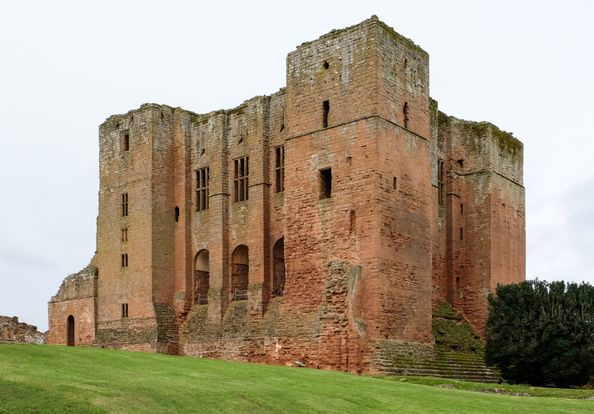
Today we will delve into the rich history and captivating story of one of England’s most magnificent castles – Kenilworth Castle.
Located in Warwickshire, Kenilworth Castle has stood for over 900 years and played a crucial role in shaping the history of England. This magnificent fortress has been home to kings, queens, and lords, witnessed royal intrigue, sieges, and political upheavals, and inspired poets and artists throughout the ages. Let us take a journey through time and explore the remarkable history of this iconic castle.
Origins and Early History
The first mention of Kenilworth Castle dates back to the 12th century when it was owned by Geoffrey de Clinton, treasurer to King Henry I. The castle’s construction began in the 1120s, and it evolved over the years, reflecting the architectural styles of the different eras it passed through. The castle’s position in the heart of England made it a vital strategic location for many kings and lords who wanted to control the Midlands and the Welsh borders.
Royal Residences
In the 13th century, Kenilworth Castle became a royal residence under King Henry III. He expanded the castle, adding the Great Hall, which was the largest hall in England at the time. Henry III’s son, Edward I, further enlarged the castle, building new towers and walls, and creating a magnificent water garden. The castle’s design and layout were admired by contemporaries and inspired many other castles and palaces across Europe.
The castle’s most famous royal resident was Queen Elizabeth I, who stayed there for 19 days in 1575. Her visit was a lavish affair, with elaborate pageants, feasts, and tournaments, and she received many gifts from her hosts, Robert Dudley, Earl of Leicester, and his wife Lettice. The queen was so impressed by the castle that she returned for another visit in 1579.
Sieges and War
Kenilworth Castle’s strategic location made it a target during the English Civil War. In 1642, the castle was held by Royalist forces, but after a long siege, it fell to the Parliamentarians in 1649. The castle was partially destroyed after the war, and many of its treasures were looted or destroyed. The castle’s decline continued in the following centuries, and it became a romantic ruin, a popular subject for painters, poets, and writers.
Victorian Revival
In the 19th century, Kenilworth Castle underwent a revival, with new owners restoring parts of the castle and creating a park around it. The castle’s gardens were recreated in their original form, with the famous water garden restored to its former glory. The castle’s grandeur and history were rediscovered, and it became a popular tourist attraction.
Modern Times
Today, Kenilworth Castle is managed by English Heritage, and visitors can explore the castle’s ruins, gardens, and exhibition rooms. The castle’s rich history and captivating story are brought to life through interactive displays, audio tours, and re-enactments. Visitors can climb the towers, walk along the walls, and imagine what life was like for the castle’s inhabitants over the centuries.
Conclusion
Kenilworth Castle is a testament to the enduring power and allure of castles. Its rich history, from royal residences to sieges and wars, is a window into the turbulent past of England. The castle’s magnificent architecture and gardens continue to inspire and enchant visitors from all over the world. As castle enthusiasts, we can marvel at the castle’s grandeur and imagine the lives of its inhabitants over the centuries. Kenilworth Castle is truly a gem of England’s cultural heritage, and we are fortunate to be able to experience it today.











Sé el primero en comentar